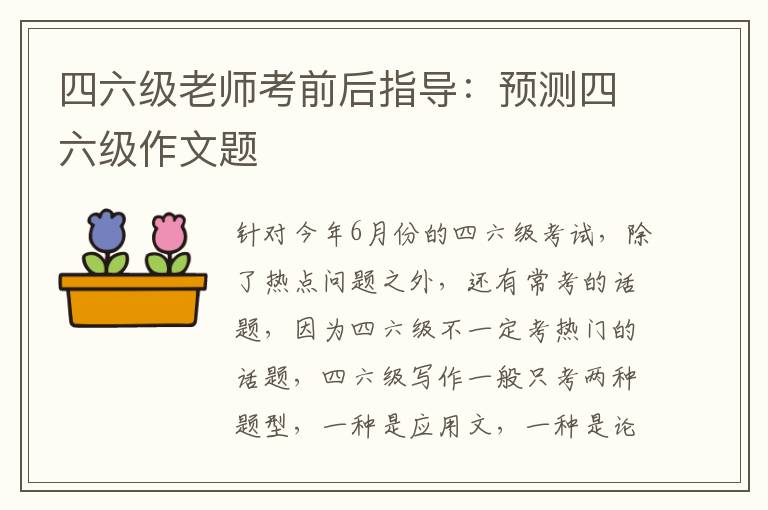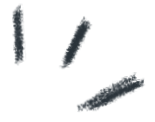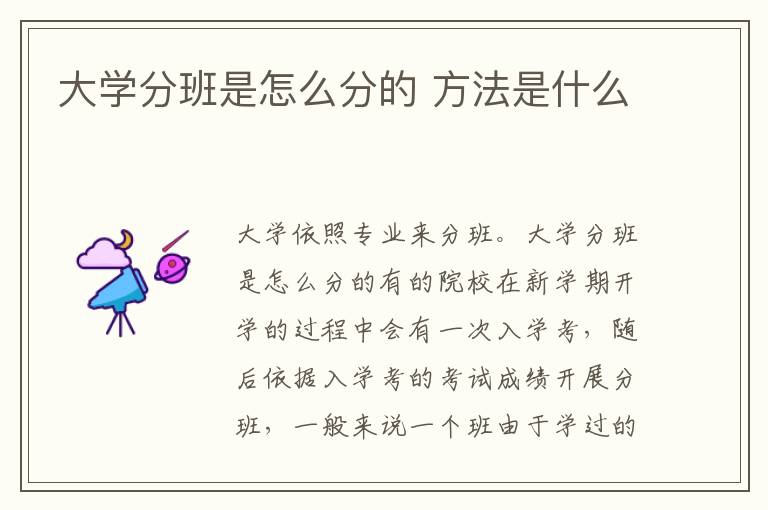新托福TPO 5綜合寫(xiě)作詳細(xì)解析:查科峽谷的巨屋

閱讀材料:
As early as the twelfth century A.D., the settlements of Chaco Canyon in New Mexico in the American Southwest were notable for their great houses, massive stone buildings that contain hundreds of rooms and often stand three or four stories high. Archaeologists have been trying to determine how the buildings were used. While there is still no universally agreed upon explanation, there are three competing theories.
早在12世紀(jì),美國(guó)西南部墨西哥地區(qū)查科峽谷的居民就以他們的巨屋而聞名。這種石質(zhì)材料建成的巨屋包好有數(shù)百個(gè)房間,而且通常有三到四層高。很多考古學(xué)家都試圖解釋這些建筑的用途。盡管業(yè)界尚未達(dá)成一致,但現(xiàn)在有三個(gè)比較有競(jìng)爭(zhēng)力的理論。
One theory holds that the Chaco structures were purely residential, with each housing hundreds of people. Supporters of this theory have interpreted Chaco great houses as earlier versions of the architecture seen in more recent Southwest societies. In particular, the Chaco houses appear strikingly similar to the large, well-known apartment buildings at Taos, New Mexico, in which many people have been living for centuries.
一個(gè)理論認(rèn)為這些巨屋是單純用來(lái)居住的,每個(gè)可以容納數(shù)百人。持有這種理論的人解釋說(shuō)查科巨屋同時(shí)間較近的一些西南族群早期建筑的雛形。尤其值得一提的是,查科的這些建筑同新墨西哥陶斯鎮(zhèn)著名的寓所式建筑非常相似。這些寓所式建筑供很多人居住了數(shù)個(gè)世紀(jì)。
A second theory contends that the Chaco structures were used to store food supplies. One of the main crops of the Chaco people was grain maize, which could be stored for long periods of time without spoiling and could serve as long-lasting supply of food. The supplies of maize had to be stored somewhere, and the size of the great houses would make them very suitable for the purpose.
第二個(gè)理論認(rèn)為查科建筑是用來(lái)儲(chǔ)存食物的。查科人的主食之一是玉米。玉米可以不宜變質(zhì),可長(zhǎng)期儲(chǔ)存,因此可以作為長(zhǎng)期的食物來(lái)源。這些玉米一定是要儲(chǔ)存在某個(gè)地方的。而巨屋的規(guī)模非常適合作為儲(chǔ)存地。
A third theory proposes that houses were used as ceremonial centers. Close to one house, called Pueblo Alto, archaeologists identified an enormous mound formed by a pile of old material. Excavations of the mound revealed deposits containing a surprisingly large number of broken pots. This finding has been interpreted as evidence that people gathered at Pueblo Alto for special ceremonies. At the ceremonies, they ate festive meals and then discarded the pots in which the meals had been prepared or served. Such ceremonies have been documented for other Native American cultures.
第三個(gè)理論認(rèn)為這些房屋是用來(lái)作祭司中心的。離一個(gè)巨屋不遠(yuǎn)的地方有個(gè)阿爾托村莊,考古學(xué)家在那里發(fā)現(xiàn)了一個(gè)由古代材料堆積成的山包。對(duì)這個(gè)山包挖掘后發(fā)現(xiàn)了大量破碎罐子。這個(gè)發(fā)現(xiàn)佐證了人們聚集到巨屋是為了某種祭祀。在祭祀中他們使用節(jié)日佳肴,然后把做飯和盛食物的器皿拋棄。而這樣的祭祀活動(dòng)在其他美洲土著文化中有所記載。
閱讀部分需要提取的觀點(diǎn)是:
這篇文章從結(jié)構(gòu)和內(nèi)容上看,都比較和諧。但是,考古學(xué)的內(nèi)容可能比較陌生,但是,更多是心理戰(zhàn)的成分。
- Main point: 查科峽谷巨屋的用途
- Sub point 1:居住
- Sub point 2:儲(chǔ)存玉米
- Sub point 3:祭祀
在聽(tīng)力部分,我們可以預(yù)測(cè)到的就是這三個(gè)理論都不成立,那么究竟是什么原因不成立呢?我們來(lái)聽(tīng)聽(tīng):
Unfortunately none of the arguments about what the Chaco great houses were used for is convincing.
很遺憾,關(guān)于查科峽谷巨屋用途的三個(gè)理論,都不具有說(shuō)服力。
First, sure, from the outside, the great houses look like later and Native American apartment buildings. But the inside of the great houses casts serious doubt on the idea that many people lived there. Ill explain. If hundreds of people were living in the great houses, then there would have to be many fireplaces, where each family did its daily cooking, but there are very few fireplaces. In one of the largest great houses, there were fireplaces for only around ten families. Yet there were enough rooms in the great house for more than a hundred families, so the primary function of the houses couldnt have been residential.
首先,當(dāng)然從外部卡萊,這些巨屋同之后出現(xiàn)的美洲土著居住建筑很相似。但是巨屋的內(nèi)部構(gòu)造卻反駁著居住說(shuō)觀點(diǎn)。我來(lái)解釋一下。如果真有數(shù)百人居住與此,那么一定有很多灶火坑以便每家都可以用來(lái)做飯。但事實(shí)上巨屋里只有很少很少的灶火坑。在其中最大的一個(gè)巨屋里,存在的灶火坑只夠十家人使用。然而,存在的空間卻可以供一百家人居住。所以,巨屋的主要功能不可能是居住。
Second, the idea that the great houses were used to store grain maize is unsupported by evidence. It may sound plausible that large empty rooms were used for storage, but excavations of the great houses have not uncovered many traces of maize or maize containers. If the great houses were used for storage, why isnt there more spilled maize on the floor? Why arent there more remains of big containers?
第二,證據(jù)也不支持巨屋用來(lái)儲(chǔ)存玉米的說(shuō)法。巨大的空屋子用來(lái)儲(chǔ)存物品,這樣的說(shuō)法聽(tīng)起來(lái)挺合理的。但是對(duì)巨屋挖掘后卻沒(méi)有發(fā)現(xiàn)太多的玉米以及容器的痕跡。如果巨屋真的是用來(lái)儲(chǔ)存的,為什么沒(méi)有在地上發(fā)現(xiàn)更多的散落的玉米呢?為什么沒(méi)有更多大號(hào)容器的痕跡呢?
Third, the idea that the great houses were ceremonial centers isnt well supported either. You know that mound at Pueblo Alto? It contains lots of other materials besides broken pots, stuff you wouldnt expect from ceremonies. For example, there are large quantities of building materials, sands, stones, even construction tools. This suggests that the mound is just a trash heap of construction material, stuff that was thrown away or not used up when a house was being built. The pots in the pile could be regular trash too, leftover from the meals of the construction workers. So the Pueblo Alto mound is not good evidence that the great houses were used for special ceremonies.
第三,祭祀中心的說(shuō)法同樣也站不住腳。大家知道阿爾托村莊嗎?在那里,除了破碎罐子之外還有很多發(fā)現(xiàn),這這些東西是不會(huì)出現(xiàn)在祭祀中的。比如,有很多建筑材料、沙子、石頭還有建筑工具。這說(shuō)明這個(gè)山包知識(shí)一個(gè)建筑材料垃圾堆,都是一些用后拋棄或者在建筑過(guò)程中沒(méi)有用完的材料。這些罐子也是屬于垃圾,是建筑工人吃飯的容器。所以,阿爾托村莊的這個(gè)山包不能作為證據(jù)支持祭祀說(shuō)。
聽(tīng)力筆記內(nèi)容:
Main point: none, convincing
Sub point one: fireplaces, ten families, a hundred families
Sub point two: not, maize, containers
Sub point three: would not for ceremonies, trash, meals
筆記格式
閱讀主觀點(diǎn)區(qū)
聽(tīng)力主觀點(diǎn)區(qū)
閱讀分論點(diǎn)一
聽(tīng)力分論點(diǎn)一
邏輯鏈
細(xì)節(jié)
閱讀分論點(diǎn)二
聽(tīng)力分論點(diǎn)二
邏輯鏈
細(xì)節(jié)
閱讀分論點(diǎn)三
聽(tīng)力分論點(diǎn)三
邏輯鏈
細(xì)節(jié)
這些詞都聽(tīng)到了嗎,都記下來(lái)了嗎?如果都聽(tīng)到了,把他們帶回到之前閱讀部分總結(jié)的邏輯鏈,就可以告訴ETS是如何反駁的了,這樣就能完成ETS要求的要體現(xiàn)閱讀和聽(tīng)力部分的關(guān)系了。
注意:
1 在開(kāi)始聽(tīng)前要畫(huà)好表格,這樣寫(xiě)出來(lái)的不會(huì)亂,要不筆記就是一坨坨
2 閱讀時(shí)候要做好筆記,記住,一定要用詞而不是句子記筆記。用句子是非常不好的習(xí)慣,很耽誤時(shí)間,如果不會(huì)誤解的話,半個(gè)單詞也好。同時(shí)也不要因?yàn)閷?xiě)作文的時(shí)候可以看到原文,因?yàn)樵暮芏鄷r(shí)候是幫助聽(tīng)力的。比如之前倫勃朗的以事實(shí)論證的,以及這篇用推理論證呢的,都能很大程度上幫助聽(tīng)力部分的理解。
3 注意要記下概念性或人名類生詞,這些詞不知道具體意思沒(méi)有關(guān)系,但是聽(tīng)力部分如果聽(tīng)到了,不知道是指哪里就不好了。所以這個(gè)要記全詞。
4 一定要記筆記,不要以為自己聽(tīng)懂的就不用記。綜合寫(xiě)作沒(méi)有題目提醒你,細(xì)節(jié)又顯得十分重要,而且就算記憶再好,寫(xiě)上十分鐘也就忘得差不多了,而十分鐘你第二點(diǎn)還沒(méi)寫(xiě)完呢。
閱讀材料:
As early as the twelfth century A.D., the settlements of Chaco Canyon in New Mexico in the American Southwest were notable for their great houses, massive stone buildings that contain hundreds of rooms and often stand three or four stories high. Archaeologists have been trying to determine how the buildings were used. While there is still no universally agreed upon explanation, there are three competing theories.
早在12世紀(jì),美國(guó)西南部墨西哥地區(qū)查科峽谷的居民就以他們的巨屋而聞名。這種石質(zhì)材料建成的巨屋包好有數(shù)百個(gè)房間,而且通常有三到四層高。很多考古學(xué)家都試圖解釋這些建筑的用途。盡管業(yè)界尚未達(dá)成一致,但現(xiàn)在有三個(gè)比較有競(jìng)爭(zhēng)力的理論。
One theory holds that the Chaco structures were purely residential, with each housing hundreds of people. Supporters of this theory have interpreted Chaco great houses as earlier versions of the architecture seen in more recent Southwest societies. In particular, the Chaco houses appear strikingly similar to the large, well-known apartment buildings at Taos, New Mexico, in which many people have been living for centuries.
一個(gè)理論認(rèn)為這些巨屋是單純用來(lái)居住的,每個(gè)可以容納數(shù)百人。持有這種理論的人解釋說(shuō)查科巨屋同時(shí)間較近的一些西南族群早期建筑的雛形。尤其值得一提的是,查科的這些建筑同新墨西哥陶斯鎮(zhèn)著名的寓所式建筑非常相似。這些寓所式建筑供很多人居住了數(shù)個(gè)世紀(jì)。
A second theory contends that the Chaco structures were used to store food supplies. One of the main crops of the Chaco people was grain maize, which could be stored for long periods of time without spoiling and could serve as long-lasting supply of food. The supplies of maize had to be stored somewhere, and the size of the great houses would make them very suitable for the purpose.
第二個(gè)理論認(rèn)為查科建筑是用來(lái)儲(chǔ)存食物的。查科人的主食之一是玉米。玉米可以不宜變質(zhì),可長(zhǎng)期儲(chǔ)存,因此可以作為長(zhǎng)期的食物來(lái)源。這些玉米一定是要儲(chǔ)存在某個(gè)地方的。而巨屋的規(guī)模非常適合作為儲(chǔ)存地。
A third theory proposes that houses were used as ceremonial centers. Close to one house, called Pueblo Alto, archaeologists identified an enormous mound formed by a pile of old material. Excavations of the mound revealed deposits containing a surprisingly large number of broken pots. This finding has been interpreted as evidence that people gathered at Pueblo Alto for special ceremonies. At the ceremonies, they ate festive meals and then discarded the pots in which the meals had been prepared or served. Such ceremonies have been documented for other Native American cultures.
第三個(gè)理論認(rèn)為這些房屋是用來(lái)作祭司中心的。離一個(gè)巨屋不遠(yuǎn)的地方有個(gè)阿爾托村莊,考古學(xué)家在那里發(fā)現(xiàn)了一個(gè)由古代材料堆積成的山包。對(duì)這個(gè)山包挖掘后發(fā)現(xiàn)了大量破碎罐子。這個(gè)發(fā)現(xiàn)佐證了人們聚集到巨屋是為了某種祭祀。在祭祀中他們使用節(jié)日佳肴,然后把做飯和盛食物的器皿拋棄。而這樣的祭祀活動(dòng)在其他美洲土著文化中有所記載。
閱讀部分需要提取的觀點(diǎn)是:
這篇文章從結(jié)構(gòu)和內(nèi)容上看,都比較和諧。但是,考古學(xué)的內(nèi)容可能比較陌生,但是,更多是心理戰(zhàn)的成分。
- Main point: 查科峽谷巨屋的用途
- Sub point 1:居住
- Sub point 2:儲(chǔ)存玉米
- Sub point 3:祭祀
在聽(tīng)力部分,我們可以預(yù)測(cè)到的就是這三個(gè)理論都不成立,那么究竟是什么原因不成立呢?我們來(lái)聽(tīng)聽(tīng):
Unfortunately none of the arguments about what the Chaco great houses were used for is convincing.
很遺憾,關(guān)于查科峽谷巨屋用途的三個(gè)理論,都不具有說(shuō)服力。
First, sure, from the outside, the great houses look like later and Native American apartment buildings. But the inside of the great houses casts serious doubt on the idea that many people lived there. Ill explain. If hundreds of people were living in the great houses, then there would have to be many fireplaces, where each family did its daily cooking, but there are very few fireplaces. In one of the largest great houses, there were fireplaces for only around ten families. Yet there were enough rooms in the great house for more than a hundred families, so the primary function of the houses couldnt have been residential.
首先,當(dāng)然從外部卡萊,這些巨屋同之后出現(xiàn)的美洲土著居住建筑很相似。但是巨屋的內(nèi)部構(gòu)造卻反駁著居住說(shuō)觀點(diǎn)。我來(lái)解釋一下。如果真有數(shù)百人居住與此,那么一定有很多灶火坑以便每家都可以用來(lái)做飯。但事實(shí)上巨屋里只有很少很少的灶火坑。在其中最大的一個(gè)巨屋里,存在的灶火坑只夠十家人使用。然而,存在的空間卻可以供一百家人居住。所以,巨屋的主要功能不可能是居住。
Second, the idea that the great houses were used to store grain maize is unsupported by evidence. It may sound plausible that large empty rooms were used for storage, but excavations of the great houses have not uncovered many traces of maize or maize containers. If the great houses were used for storage, why isnt there more spilled maize on the floor? Why arent there more remains of big containers?
第二,證據(jù)也不支持巨屋用來(lái)儲(chǔ)存玉米的說(shuō)法。巨大的空屋子用來(lái)儲(chǔ)存物品,這樣的說(shuō)法聽(tīng)起來(lái)挺合理的。但是對(duì)巨屋挖掘后卻沒(méi)有發(fā)現(xiàn)太多的玉米以及容器的痕跡。如果巨屋真的是用來(lái)儲(chǔ)存的,為什么沒(méi)有在地上發(fā)現(xiàn)更多的散落的玉米呢?為什么沒(méi)有更多大號(hào)容器的痕跡呢?
Third, the idea that the great houses were ceremonial centers isnt well supported either. You know that mound at Pueblo Alto? It contains lots of other materials besides broken pots, stuff you wouldnt expect from ceremonies. For example, there are large quantities of building materials, sands, stones, even construction tools. This suggests that the mound is just a trash heap of construction material, stuff that was thrown away or not used up when a house was being built. The pots in the pile could be regular trash too, leftover from the meals of the construction workers. So the Pueblo Alto mound is not good evidence that the great houses were used for special ceremonies.
第三,祭祀中心的說(shuō)法同樣也站不住腳。大家知道阿爾托村莊嗎?在那里,除了破碎罐子之外還有很多發(fā)現(xiàn),這這些東西是不會(huì)出現(xiàn)在祭祀中的。比如,有很多建筑材料、沙子、石頭還有建筑工具。這說(shuō)明這個(gè)山包知識(shí)一個(gè)建筑材料垃圾堆,都是一些用后拋棄或者在建筑過(guò)程中沒(méi)有用完的材料。這些罐子也是屬于垃圾,是建筑工人吃飯的容器。所以,阿爾托村莊的這個(gè)山包不能作為證據(jù)支持祭祀說(shuō)。
聽(tīng)力筆記內(nèi)容:
Main point: none, convincing
Sub point one: fireplaces, ten families, a hundred families
Sub point two: not, maize, containers
Sub point three: would not for ceremonies, trash, meals
筆記格式
閱讀主觀點(diǎn)區(qū)
聽(tīng)力主觀點(diǎn)區(qū)
閱讀分論點(diǎn)一
聽(tīng)力分論點(diǎn)一
邏輯鏈
細(xì)節(jié)
閱讀分論點(diǎn)二
聽(tīng)力分論點(diǎn)二
邏輯鏈
細(xì)節(jié)
閱讀分論點(diǎn)三
聽(tīng)力分論點(diǎn)三
邏輯鏈
細(xì)節(jié)
這些詞都聽(tīng)到了嗎,都記下來(lái)了嗎?如果都聽(tīng)到了,把他們帶回到之前閱讀部分總結(jié)的邏輯鏈,就可以告訴ETS是如何反駁的了,這樣就能完成ETS要求的要體現(xiàn)閱讀和聽(tīng)力部分的關(guān)系了。
注意:
1 在開(kāi)始聽(tīng)前要畫(huà)好表格,這樣寫(xiě)出來(lái)的不會(huì)亂,要不筆記就是一坨坨
2 閱讀時(shí)候要做好筆記,記住,一定要用詞而不是句子記筆記。用句子是非常不好的習(xí)慣,很耽誤時(shí)間,如果不會(huì)誤解的話,半個(gè)單詞也好。同時(shí)也不要因?yàn)閷?xiě)作文的時(shí)候可以看到原文,因?yàn)樵暮芏鄷r(shí)候是幫助聽(tīng)力的。比如之前倫勃朗的以事實(shí)論證的,以及這篇用推理論證呢的,都能很大程度上幫助聽(tīng)力部分的理解。
3 注意要記下概念性或人名類生詞,這些詞不知道具體意思沒(méi)有關(guān)系,但是聽(tīng)力部分如果聽(tīng)到了,不知道是指哪里就不好了。所以這個(gè)要記全詞。
4 一定要記筆記,不要以為自己聽(tīng)懂的就不用記。綜合寫(xiě)作沒(méi)有題目提醒你,細(xì)節(jié)又顯得十分重要,而且就算記憶再好,寫(xiě)上十分鐘也就忘得差不多了,而十分鐘你第二點(diǎn)還沒(méi)寫(xiě)完呢。









